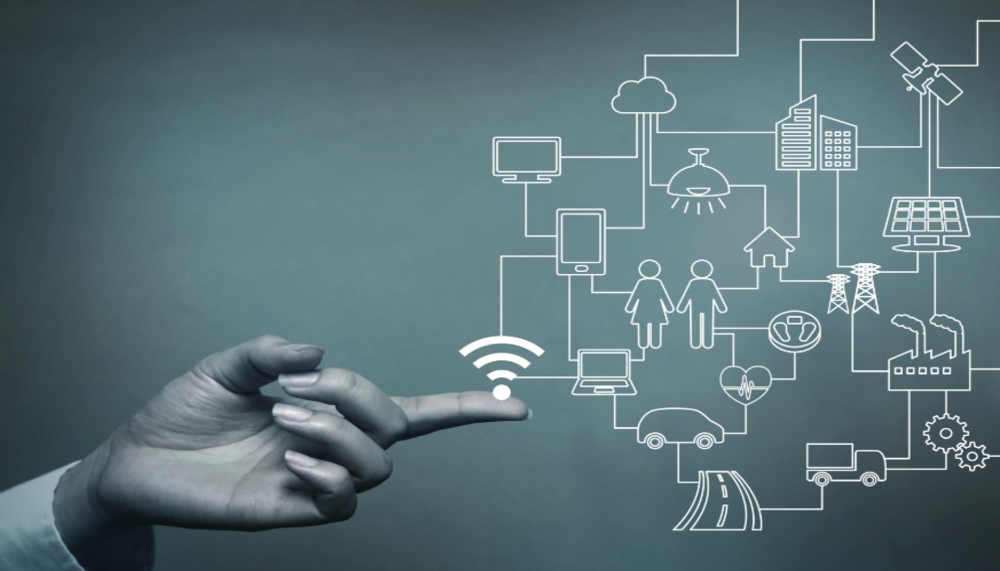How Will Machine to Machine (M2M) and IoT Change the Future?
M2M is direct communication between devices using any communications channel, including both wired and wireless. The term is used to describe any kind of technology that enables networked devices to exchange information and perform actions without manual control. It may seem quite similar to IoT, however, below are the main differences between the two.
1. Internet of Things (IoT)
IoT is all about connecting devices that weren’t connected to the existing internet to servers, cloud services, and exchanging information commutatively. Devices may include sensors, driving devices, buildings, cars, home appliances, and electronics. As these devices become connected to the internet, information that has not been utilized so far can start being processed, stored, and analyzed. We can easily find AI speakers, security cameras, and connected vehicles that are forming a big part of IoT environment.
2. Machine to Machine (M2M)
Machine to Machine, unlike the IoT, the information is not handled nor processed on servers or cloud services. As machines exchange information with each other, which can increase efficiency and automation process. This is applied in many areas such as factory automation, access security and control, and transportation payment system.
A practical application is the replenishment system of beverage vending machines. Prior to enjoying this technology, people had to manually go check the inventories and fill in the shortfalls. The introduction of M2M automatically connected the inventory management system and adjusted the schedule to prevent shortages. It is also helping with the placements and operations of trucks in the logistics sector.
1) Connection Point and Method
M2M: Direct communication between machine to machine
IoT: Things connect with other devices or people through the internet
2) Purpose of Use
M2M: Collection of information or machine function controls
IoT: Utilization through collection and sharing of information
How Sensor Networks with Big Data Will Change the Future
M2M recently attracted attention thanks to the development of sensor technology. It’s a low-cost, compact sensor that makes M2M technology more versatile. Additionally, stable communication in low-power environments such as Low Power Wireless Access (LPWA) enabled easy network deployment.
At the same time, technologies connecting to the network and collecting data from the network are also evolving. The data collected from this sensor network can be used as ‘Big Data’. As IoT records the gathered information as Big Data, it comprehensively can be understood as a technology that includes the M2M sensor network and produces the data through the internet. Therefore, using IoT and M2M together can increase the utilization of Big Data.
Advantages of M2M Technology
1) Precise Control of the Machine
Being able to send and receive data between devices allows M2M to enforce complex work without human hands. In particular, this has the advantage of lowering the probability of unforeseen mistakes or accidents due to human interference.
2) Preventing Machine Failure and Detects
Many sensors can be placed in large plants for monitoring in order to detect and troubleshoot device failures. Also, when a failure occurs, the technology can help to find and solve the cause.
3) Continuous Monitoring and Increase in Work Efficiency
As M2M automatically controls the machine, enabling efficient processes such as lessening human interference and lower labor costs. Engineers spend a lot of time finding the data they need to maintain the equipment and devices. The technology can help bypass this process, resulting in efficient operations.
In the agricultural industry, various sensor communication modules are used to remotely monitor the temperature, humidity, amount of sunshine, and precipitation. This increases productivity and reduces production costs. In other words, M2M technology is attracting all the attention thanks to its ability to create new business and even products that might have never existed before.
The Challenges
Even though IoT and M2M technologies are pricelessly meaningful and helpful, there still are challenges to be solved. Cyberattacks that target IoT devices attempt to break into PCs or smartphones with malware. They steal personal and corporate data stored or even use them as a platform to penetrate other devices or servers.
In order to prevent this, you will need both software and hardware security measures to prepare for advanced attacks that are targeted at IoT and M2M. In this case, where there’s a large number of connected devices, it is costly and time-consuming to manage and respond individually. Therefore it’s important to obtain the support of security experts that can manage the integration or introduce solutions such as cloud-based and API measures.
It is expected that more than 50 billion devices are connected to the internet worldwide. We can’t even imagine the accumulation of Big Data that are collected via these connected devices. The use of this Big Data and technology will create new opportunities and values for the companies – however, they must focus more on security measures or on creating new values by introducing new technologies and solutions.
Penta Security provides IoT security solutions in various fields, especially in IoT environments where information flows in real-time through various devices, which emphasizes the role of reliability and integrity of security measures. As a result, we meet the requirements for server infrastructure security and encrypted communication methods. Just like Penta Security’s goal, ‘Secure First, Then Connect’ – securing the IoT must be the top priority as the implementation and adoption of IoT devices grow.
